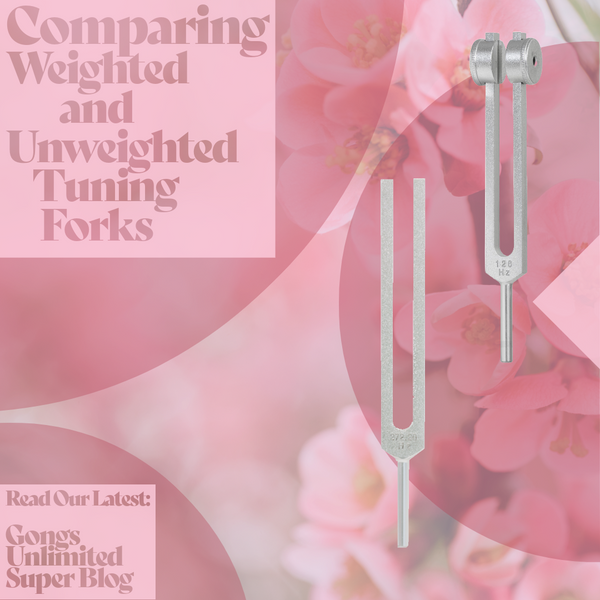Ocarinas 101: The Basics of Ocarinas
Gongs Unlimited now carries Ocarinas!
Hey Ocarinas!
What are you all about? Why do we love you so?I want the world to know about you my cute little musical and healing instrument.
Like a whale, I will speak loudly about thee, Ocarina, for as the whalers say about both cetaceans and ocarinas - Thar she blows!
STL Ocarina offers lessons for 12-hole Ocarinas online:
Lesson 1
Lesson 2
Lesson 3
Some Vanguard Angles on the History of Ocarinas
Back in the day ocarinas, were not called ocarinas. But like all musical instruments, they have evolved with us; as our technologies and skills got better, so did they.
The Ocarina is a “vessel flute.” Those are instruments made from gourds or pottery, hence the word vessel.
On this day, Chekhov said “vessel” so many times, he went out of his gourd.
The ocarina belongs to an ancient family of musical instruments. We are going back, like, 12,000 years. I mean, some historians think we were just domesticating dogs back then. Perhaps when the wild wolves heard us playing our proto-ocarinas, the wolves woofed to themselves, “The music coming from those instruments is so solid, we better become more polite so we can start hanging out with those stinky apes, cause, hooowwwwwl!!, we dig that ocarina sound!”
(In case you think we are taking literary license with the above, you are barking up the wrong tree. It has been pretty much proven that ancient wolves were the beatniks of that era, and their interior monologs were like reading a first draft of a Kerouac novel.)
Different types of ocarinas can be traced back to South and Central American cultures as well as China and India, often created in the shape of small birds and other animals.
(These designs are most likely due to the presence of domesticated dogs, the former wild wolves, who asked us to play more songs about chasing birds and squirrels.)
Tales of the Modern Ocarina
What we know as the modern ocarina first appeared in sixteenth century Europe. When we say “appeared” we mean it literally. Europeans didn’t design it; they saw some ocarinas from Central America when Aztec musicians were sent to the Vatican to perform for the Pope Charles V.
They gave the Pope and the Pope’s people, and soon most of Europe – a case of Ocarina Fever!
Thankfully Ocarina Fever is not as deadly as the Bubonic Plague. In fact, it is something now that is being transmitted all over Asia. Extra! Extra! Read all about it!
Create Link for this article. https://www.phnompenhpost.com/siem-reap-insider/ocarina-fever It was an Italian, Guiseppe Donati -- I mean did we really need to say he is Italian? I mean, what other nationality could this fellow be with a name like Giuseppe Donati? – anyway, this fellow in the mid-1800’s adjusted the vessel flute design for more accurate pitch and an extended range of notes.
And what did he call his instrument? The “ocarina” which means in Italian, “little goose.” And that name caught on. That’s where we got that name.
Soon after, Europe found itself with ocarina ensembles like Gruppo Ocarinistico Budriese. Famed composer György Ligeti called for four ocarinas in his Violin Concierto.
Since then, the ocarina has been included in classical compositions and pop songs, and of course, all the gamers know it for being in the Nintendo classic - The Legend of Zelda: Ocarina of Time.
The Ocarina of Time's origins are unknown. We do know that Princess Zelda claims it is a sacred instrument, passed down within the Royal Family of Hyrule for many generations. They protect it from evildoers who would use it power for ill. The Ocarina of Time will only be given to the soul who opens the door of time to retrieve the Master Sword.
What are different types of Ocarinas?
There are as many different ocarinas as there are stars in the universe, we believe. But if that is too many to fathom right now, let’s start with these.
Transverse (Sweet Potato-Style)
The most common ocarina, with a rounded shape, held horizontally and played by covering holes with fingers to ascend or descend in pitch. In this style, 10-hole and 12-hole Ocarinas are the most common.
Pendant
English Pendant - Very small and portable: this uses a 4 to 6-hole fingering system.
Peruvian Pendant – This style goes back to the Incas. It is often made to look like a shape of an animal. It uses 8 to 9-hole tuning.
Inline Pendant – This style uses a linear fingering pattern rather than staggered finger, thus allowing for more holes on its smaller, pendant-sized body.
Multi-chambered Pendant – This design allows for the playing of multiple notes through separate chambers. It uses two separate mouthpieces.
What should I consider when buying an Ocarina?
Ocarinas are made from a few different materials, which often determine how easy or difficult they are to make and, in turn, how expensive they are.
Plastic Ocarinas are durable and are a great option for beginners and children. They still sound great, but they’re inexpensive and hard to break. Great for schools! The only issue is, if you throw them away, they don’t biodegrade and then end up in that giant pile of ocean debris.
Ceramic Ocarinas are the most common. This is the type of Ocarina that Gongs Unlimited offers. Ceramic resonates and vibrates better than synthetic materials and because they’re handcrafted, they are like little works of art with their varying details and designs. They are cool. You will be cool when you have one. Look! All this ceramic thrill and trill can be yours!
Wooden Ocarinas are also sold, though the process for making them is very time consuming, so they tend to be more expensive, though they are more durable than ceramic. Sometimes trees are happy that their wood was used to make an ocarina. Sometimes the trees wished they became a guitar or baseball bat.
Porcelain Ocarinas are geared most specifically towards professional players and offer the purest sound with the loudest resonance. Porcelain is very delicate, as are professional ocarina players.
But don’t forget about size and pitch, kids!
Size
Pitch is determined by the size of the ocarina.
Bass and Tenor Ocarinas are the largest, with larger holes, with Alto and Soprano Ocarinas being much smaller, with smaller holes.
Pitch
Each Ocarina is tuned to a specific key or scale, with the exception of double or triple-Ocarinas. So check out what the key or pitch is to see if you like the notes in that key.
Check out our growing selection of Ocarinas here.

Hey Ocarinas!
What are you all about? Why do we love you so?I want the world to know about you my cute little musical and healing instrument.
Like a whale, I will speak loudly about thee, Ocarina, for as the whalers say about both cetaceans and ocarinas - Thar she blows!
STL Ocarina offers lessons for 12-hole Ocarinas online:
Lesson 1
Lesson 2
Lesson 3
Some Vanguard Angles on the History of Ocarinas
Back in the day ocarinas, were not called ocarinas. But like all musical instruments, they have evolved with us; as our technologies and skills got better, so did they.
The Ocarina is a “vessel flute.” Those are instruments made from gourds or pottery, hence the word vessel.
On this day, Chekhov said “vessel” so many times, he went out of his gourd.
The ocarina belongs to an ancient family of musical instruments. We are going back, like, 12,000 years. I mean, some historians think we were just domesticating dogs back then. Perhaps when the wild wolves heard us playing our proto-ocarinas, the wolves woofed to themselves, “The music coming from those instruments is so solid, we better become more polite so we can start hanging out with those stinky apes, cause, hooowwwwwl!!, we dig that ocarina sound!”
(In case you think we are taking literary license with the above, you are barking up the wrong tree. It has been pretty much proven that ancient wolves were the beatniks of that era, and their interior monologs were like reading a first draft of a Kerouac novel.)
Different types of ocarinas can be traced back to South and Central American cultures as well as China and India, often created in the shape of small birds and other animals.
(These designs are most likely due to the presence of domesticated dogs, the former wild wolves, who asked us to play more songs about chasing birds and squirrels.)
Tales of the Modern Ocarina
What we know as the modern ocarina first appeared in sixteenth century Europe. When we say “appeared” we mean it literally. Europeans didn’t design it; they saw some ocarinas from Central America when Aztec musicians were sent to the Vatican to perform for the Pope Charles V.
They gave the Pope and the Pope’s people, and soon most of Europe – a case of Ocarina Fever!
Thankfully Ocarina Fever is not as deadly as the Bubonic Plague. In fact, it is something now that is being transmitted all over Asia. Extra! Extra! Read all about it!
Create Link for this article. https://www.phnompenhpost.com/siem-reap-insider/ocarina-fever It was an Italian, Guiseppe Donati -- I mean did we really need to say he is Italian? I mean, what other nationality could this fellow be with a name like Giuseppe Donati? – anyway, this fellow in the mid-1800’s adjusted the vessel flute design for more accurate pitch and an extended range of notes.
And what did he call his instrument? The “ocarina” which means in Italian, “little goose.” And that name caught on. That’s where we got that name.
Soon after, Europe found itself with ocarina ensembles like Gruppo Ocarinistico Budriese. Famed composer György Ligeti called for four ocarinas in his Violin Concierto.
Since then, the ocarina has been included in classical compositions and pop songs, and of course, all the gamers know it for being in the Nintendo classic - The Legend of Zelda: Ocarina of Time.
The Ocarina of Time's origins are unknown. We do know that Princess Zelda claims it is a sacred instrument, passed down within the Royal Family of Hyrule for many generations. They protect it from evildoers who would use it power for ill. The Ocarina of Time will only be given to the soul who opens the door of time to retrieve the Master Sword.
What are different types of Ocarinas?
There are as many different ocarinas as there are stars in the universe, we believe. But if that is too many to fathom right now, let’s start with these.
Transverse (Sweet Potato-Style)
The most common ocarina, with a rounded shape, held horizontally and played by covering holes with fingers to ascend or descend in pitch. In this style, 10-hole and 12-hole Ocarinas are the most common.
Pendant
English Pendant - Very small and portable: this uses a 4 to 6-hole fingering system.
Peruvian Pendant – This style goes back to the Incas. It is often made to look like a shape of an animal. It uses 8 to 9-hole tuning.
Inline Pendant – This style uses a linear fingering pattern rather than staggered finger, thus allowing for more holes on its smaller, pendant-sized body.
Multi-chambered Pendant – This design allows for the playing of multiple notes through separate chambers. It uses two separate mouthpieces.
What should I consider when buying an Ocarina?
Ocarinas are made from a few different materials, which often determine how easy or difficult they are to make and, in turn, how expensive they are.
Plastic Ocarinas are durable and are a great option for beginners and children. They still sound great, but they’re inexpensive and hard to break. Great for schools! The only issue is, if you throw them away, they don’t biodegrade and then end up in that giant pile of ocean debris.
Ceramic Ocarinas are the most common. This is the type of Ocarina that Gongs Unlimited offers. Ceramic resonates and vibrates better than synthetic materials and because they’re handcrafted, they are like little works of art with their varying details and designs. They are cool. You will be cool when you have one. Look! All this ceramic thrill and trill can be yours!
Wooden Ocarinas are also sold, though the process for making them is very time consuming, so they tend to be more expensive, though they are more durable than ceramic. Sometimes trees are happy that their wood was used to make an ocarina. Sometimes the trees wished they became a guitar or baseball bat.
Porcelain Ocarinas are geared most specifically towards professional players and offer the purest sound with the loudest resonance. Porcelain is very delicate, as are professional ocarina players.
But don’t forget about size and pitch, kids!
Size
Pitch is determined by the size of the ocarina.
Bass and Tenor Ocarinas are the largest, with larger holes, with Alto and Soprano Ocarinas being much smaller, with smaller holes.
Pitch
Each Ocarina is tuned to a specific key or scale, with the exception of double or triple-Ocarinas. So check out what the key or pitch is to see if you like the notes in that key.
Check out our growing selection of Ocarinas here.
Also in Gongs Unlimited Super Blog

What's the Difference Between Weighted and Unweighted Tuning Forks?
Tuning Forks are a great way to bring new sounds to your meditations and healings. But what's the difference between Weighted and Unweighted Tuning Forks? What are the best ways to use each? We've got some answers to help you make your decision!

Everything You Didn't Know but Wish You Knew About Quartz and Frosted Crystal Bowls
You love Quartz Crystals. They're cool to look at, fun to hold up to the light, and they make you feel like a wizard. And Quartz Crystal Singing Bowls? Even more amazing than the gemstones. But how are they made? There's a lot of cloudiness and confusion about how Frosted Crystal Bowls are made. Learn more here!

Thirteen Questions with Gong Maker Ryan Shelledy of Shelledy Sounds
Ryan Shelledy has been making gongs for over a decade from his hand-built foundry in the Midwest. His amazing creations blur the line between, art, sonic sculpture, percussion, and sound healing tools. He is always innovating and developing beautiful, unique pieces that keep us excited for his next delivery of gongs. Learn more about his work in our recent interview with him!


Max Holmquist
Author